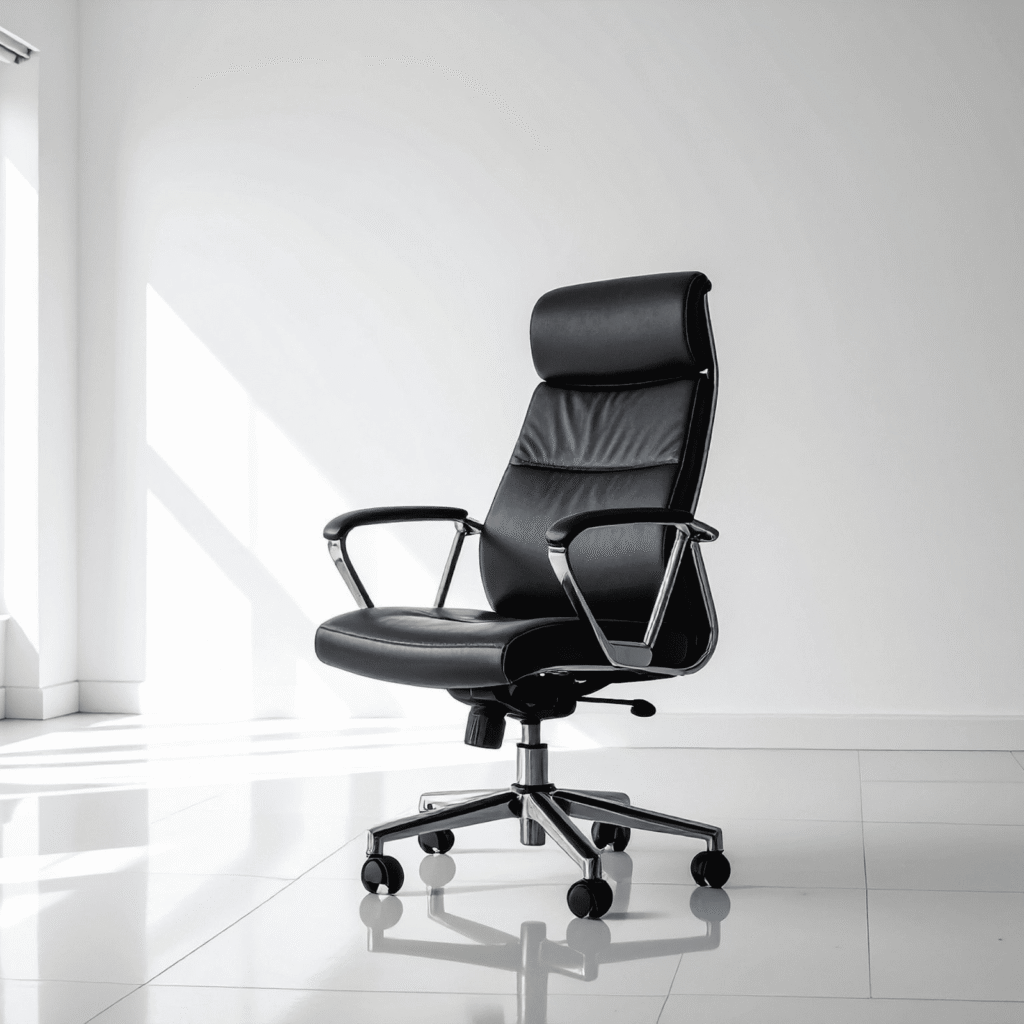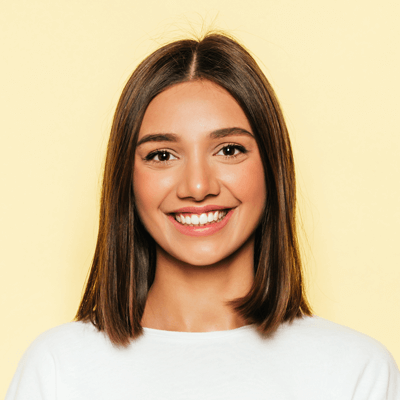Since over half of the U.S. workforce now works from home or in a hybrid capacity, a lot of people are spending money on comfortable home offices. Research shows that employees truly like having the freedom to pick where they work. For instance, 76% of workers said that being able to choose between working from home or in a hybrid setting makes them want to stay in their jobs. Because individuals spend more time at home workstations, picking the right chair is very crucial for health and productivity. This article will help you choose the best chair for your needs by comparing ergonomic seats, which are meant to be comfy and adaptable, with ordinary office chairs, which are simple and affordable.
Table of Contents
ToggleWhat Is an Ergonomic Chair?

An ergonomic chair is built to accommodate the way your body moves and looks. It has features that can be changed, like the height of the seat for flat feet, the depth of the seat to keep the knees from hurting, and a backrest that follows the spine’s natural “S” shape. Most of them also provide lumbar support, which could be a moving pad or a curved mesh for your lower back.
Some frequent ergonomic features are:
- Height Adjustment: Wheels or a hydraulic lift to keep your knees at a right angle and your feet flat so that blood can circulate freely.
- A lumbar support is a backrest that can be adjusted or modified to fit the curve of the spine and help you sit up straight.
- You can move the armrests up, down, or around to keep your arms at a comfortable 90° angle. This will make your neck and shoulders feel better.
- Headrest: Supports the head and neck for long periods of time while working.
- Swivel Base with Wheels: A sturdy 5-point foundation that lets you move around easily without needing to twist.
- Recline/Tilt Mechanism: Lets you lean back while still supporting your back.
Each part moves to accommodate your body, keeping your spine, pelvis, and legs in line instead of forcing you into a set position. This means you won’t become as fatigued and are less likely to have back problems; therefore, ergonomic chairs are perfect for people who sit for long periods of time.
What Is a Standard Office Chair?

Regular office chairs are simpler in design, usually consisting of a seat, backrest, and fixed armrests with limited adjustability. Many entry-level models only allow height and tilt tension adjustments, without separate lumbar or tilt controls. Once set up, the lumbar position and armrest height stay fixed, and it’s difficult to change the backrest angle or seat depth.
Because of this simplicity, traditional chairs are more affordable and often used in temporary or budget setups, like conference rooms or visitor areas. While initially comfortable, they lack ergonomic features for long-term use.
Key points about regular office chairs:
- Limited Flexibility: Height or tilt may have minimal range. Seat depth, armrest height, or back support are rarely adjustable, often leading to slouching or awkward posture.
- Basic Backrest: Usually fixed in shape and angle, with little or no lumbar support—causing poor spinal alignment over time.
- Simple Materials: Lightweight frames with basic fabrics like cotton or vinyl, which wear out faster and offer less breathability.
- Cost and Availability: Easy to find at low prices, ideal for short-term or low-budget use.
In short, a standard office chair may feel fine for short periods, but over time can cause discomfort. As one source notes, “traditional chairs often lack the ergonomic features necessary for prolonged comfort and health.” They’re suitable for occasional use but not for long work hours.
Key Differences Between Ergonomic and Office Chairs
To compare clearly, here’s a side-by-side look at the main differences:
Feature | Ergonomic Chair | Standard Office Chair |
|---|---|---|
Lumbar Support | Built-in and adjustable. Supports the natural curve of the lower back and can be moved up/down. | Usually none or fixed. Most basic chairs lack real lumbar support. |
Adjustability | Highly adjustable: height, seat depth, backrest angle, armrest position, tilt tension, headrest, etc. This lets you customize for comfort. | Limited adjustability: often only seat height and perhaps basic tilt. Few or no options to change seat depth, armrest height/angle, or back angle. |
Comfort (Support) | Engineered for all-day comfort. Cushions and contours support spine alignment and evenly distribute weight. Ergonomic chairs help prevent slouching and fatigue. | Comfortable initially, but not designed for long hours. Without adjustment, users may slouch or strain after just a few hours. |
Durability | Typically built with higher-quality materials (steel frames, durable mesh, premium foam). Brands like Herman Miller are made to last many years. | Often made with cheaper materials. Many are not built to last decades, so parts may wear out or break sooner. (“Fast furniture” office chairs often end up in landfills as they fail.) |
Cost | Higher upfront cost. New ergonomic chairs range from hundreds to over a thousand dollars (investing in long-term health). | Lower initial cost. Entry-level office chairs can be $50–$200. A budget choice if you only need short-term use. |
Sustainability | Many premium ergonomic chairs have refurbished/resale markets. Buying used/refurbished models reduces waste. High-end chairs are often designed for repairs. | Cheap office chairs usually aren’t resold; most end up in landfills. In fact, 12+ million tons of furniture waste are generated annually (80% landfilled), and inexpensive chairs contribute heavily to this waste. |
Best Use | Full-time remote workers or anyone sitting many hours daily will benefit most. Designed for long sessions. | Casual or infrequent use (a few hours at a time). Good for secondary seating, short work sessions, or small budgets. |
Ergonomic chairs are more expensive, but they are quite comfortable and have adjustable lumbar support and other features. Standard chairs are easier and cheaper, but they don’t help you keep your posture excellent for very long.
Pros and Cons of Ergonomic Chairs for Remote Workers
Pros:
- Ergonomic chairs assist keep your back in its natural shape and your posture straight. They help you sit up straight by giving you adjustable lumbar support, which minimizes your risk of suffering long-term back and neck problems.
- Less Pain and Fatigue: These chairs help ease fatigue and muscle strain by spreading out weight and letting you move about (for example, by reclining or swiveling). A lot of people indicate that their lower back discomfort goes better when they switch to a decent ergonomic chair.
- Custom Comfort: An ergonomic chair can fit you, not the other way around. You may alter the height of the seat, the armrests, the tilt, and other factors to make it fit your body. This means that you will still be comfortable after working for a long time.
- Long-Term Investment: A well-built ergonomic chair is durable and can last a decade or more. Over its life, it can pay for itself by preventing pain and reducing the need for replacements.
Cons:
- Higher Initial Cost: Ergonomic seats that cost a lot of money up front. A new Herman Miller Aeron or Steelcase chair, for example, may cost more than $1,000, which is a lot more than a $100 office chair.
- It can take a long to learn how to use and set up an ergonomic chair effectively because there are so many adjustments. Users may need to read the manual or watch videos to learn how to use all of the features.
- Size and Weight: Ergonomic seats are usually bigger and heavier, especially the more expensive ones. If you have a small workplace or need to move your chair around a lot, this can be an issue.
- Too Much for Rare Use: You might not need all of the ergonomic features if you only sit for an hour or two every now and then. Sometimes, a simple chair or even a cushion in the right spot might be all you need.
Pros and Cons of Standard Office Chairs
Pros:
- It’s easy to find and buy conventional office chairs that are cheap. Most stores that sell office supplies have simple models for under $100. If pricing is a big deal, it’s easy to buy them.
- These chairs are usually lightweight, so they’re easy to travel. You may move them around more readily or place them under the desk. Great for people who don’t move their chairs around a lot.
- Simplicity: There are fewer features, therefore there is nothing to adjust or set up. A regular chair “just works” right away for short tasks or when you need it.
Cons:
- Not Enough Back Support: A lot of them don’t have a backrest that fits the shape of your back or lumbar support. Over time, this can lead you hunch over, especially if you don’t try to keep your posture straight.
- Not for Long Hours: These chairs are only suited for short meetings or guests. In the U.S., adults now spend an average of over 10 hours a day sitting down, both at work and on the way there. If a simple chair doesn’t give you enough support, you can feel stiff, have sore shoulders, or have lower back pain after a few hours.
- Not as durable: These chairs tend to wear out quickly because they are built of less expensive materials. Wheels can break, gas lifts can stop operating, or cloth can tear, therefore they need to be changed sooner.
- Limited Ergonomic Features: You normally can’t modify the height, depth, or angle of the seat or armrests. The chair’s height and angle can’t be changed, which could not work for your body type or workstation setup.
In brief, a typical office chair is acceptable for short tasks or light use, but it can be uncomfortable if you sit in it all day. Most Americans work from home most of the time, therefore it’s usually worth it to get better chairs.
Which Is Better for Remote Workers?
The best chair depends on how you use it.
If you work from home full-time (6 to 8 hours a day), an ergonomic chair is the best choice. It keeps you upright, reduces back tension, and boosts productivity. Though it costs more upfront, it can save you money on doctor visits and replacements later.
If you only work a few hours a week or move between your desk and couch, a regular office or task chair may be enough. It’s light and affordable for short use, but if you feel discomfort, try adding ergonomic accessories.
For those on a budget, a refurbished ergonomic chair is a great middle ground. Companies like Nulife Chairs and Chairorama offer used Herman Miller and Steelcase chairs at 40 to 60 percent less than new ones. You get the same support and comfort at a lower cost, while helping the environment.
Budget and Sustainability Considerations
Buying refurbished ergonomic chairs is both affordable and eco-friendly. A restored Herman Miller Aeron can cost half as much as new and keeps good furniture out of landfills. The EPA reports that in 2018, the U.S. threw away over 12 million tons of furniture, with 80 percent going to landfills.
New ergonomic chairs range from 400 to 1,000 dollars, while basic office chairs cost 50 to 200 dollars. Used high-end chairs often sell for 300 to 600 dollars and can last over a decade, making them cost-effective long term.
Ergonomic chairs built from quality materials like aluminum, steel, and mesh can be repaired and reused. Companies like Nulife Chairs refurbish used Herman Miller Aeron chairs by replacing worn parts and reselling them with warranties. This process cuts waste, saves money, and supports sustainability.
In short, a refurbished ergonomic chair is the best balance of comfort, durability, and environmental responsibility. Always buy from a trusted supplier that guarantees quality.
Where to Buy Affordable Ergonomic or Office Chairs
When buying chairs, the first thing you should look for is quality and warranties.
Look for well-known brands or certified refurbishers. For example, Nulife Chairs is an expert at fixing up high-end chairs like the Herman Miller Aeron. Their “Expert Refurbishment” process makes the chair look and feel as good as new by replacing any broken parts with high-quality ones. You can also get used Aerons with mechanical guarantees from companies like Chairorama or authorized Herman Miller dealers. Buying from these sources ensures you get a real, safe product.
Local marketplaces: If you are on a tight budget, check Craigslist, Facebook Marketplace, or local ads. Sometimes people sell used high-end chairs for low prices. Always test the chair before buying, check for tears, and make sure the seller’s story is real. You can often negotiate the price or ask for a demo. Without a guarantee, you are responsible for any damage or missing parts.
You can also buy ergonomic accessories like lumbar pillows or seat cushions. Check if they come with a good return or warranty policy, ideally covering mechanics for at least a year or longer, especially for refurbished chairs.
Choosing trustworthy sellers reduces the risk of fake or low-quality goods. A remanufactured Aeron or Steelcase chair from a reliable provider will perform just like new.
Conclusion
Ergonomic chairs are ideal for long work hours because they help prevent pain and boost productivity. If you work from home only occasionally, a simple chair or cushion may be enough. Freelancers and small teams can mix and match to save money, such as using one ergonomic chair for daily use and simpler chairs for guests. Overall, ergonomic chairs last longer, improve comfort, and support sustainability, while buying refurbished helps you save money and reduce waste.
Frequently Asked Questions (FAQs)
What is the difference between an ergonomic chair and an office chair?
An ergonomic chair is designed to help you sit comfortably and naturally. It offers multiple adjustments, like seat height, backrest angle, and armrest position, and includes lumbar support for the lower back. Most regular office chairs have limited adjustments and less back support. In short, ergonomic chairs adapt to your body, while regular chairs keep you in one fixed position.
Are ergonomic chairs better than office chairs?
Yes, for most people who sit a lot, ergonomic chairs are the better choice. They’re designed to keep you comfortable and properly aligned throughout the day, helping you sit up straight and feel better. However, if you only sit for short periods, a basic chair might be enough for now. The best part about ergonomic chairs is their health benefits; they support the natural curve of your lower back, something regular chairs don’t do.
Can an ergonomic chair help with back pain?
Absolutely. Ergonomic chairs reduce pressure on the lower spine with adjustable lumbar support that maintains your back’s natural “S” curve. This alignment eases strain and can greatly reduce or even eliminate back pain from long sitting hours.
How long does an ergonomic chair last?
Yes, of course. Ergonomic chairs are made to relieve pressure on the lower back. Their adjustable lumbar support fits the natural “S” shape of your spine, reducing strain on muscles and vertebrae. Many people find that switching to a properly adjusted ergonomic chair greatly lessens or even eliminates back pain from long sitting hours.
Can a standard office chair be upgraded with accessories?
Yes. If you already have a basic chair, you can add ergonomic accessories like a lumbar cushion, seat pad, or adjustable armrest covers for extra comfort and better posture. A footrest can also help keep your feet flat. However, these are only short-term fixes; they improve comfort but don’t offer all the benefits of a true ergonomic chair.
Looking for comfort that doesn’t break your budget?
Explore our collection of ergonomic and refurbished office chairs tailored for remote workers and startups.


